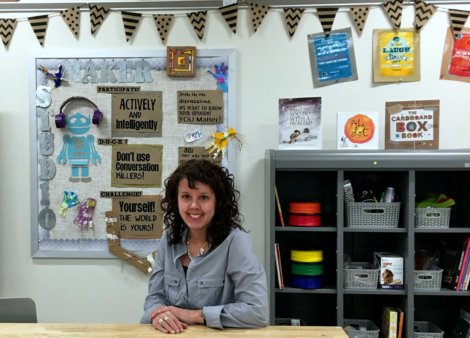
Guest Blogger: A Different Way to Learn
Posted by allisyn on
I am thrilled to feature one of our first place Election ’08 Lesson Plan Contest Winners as our first guest blogger!
Beatrice shares her experiences using BrainPOP and BrainPOP Jr. with her two children as a homeschool educator in this powerful essay.
Beatrice’s award winning lesson can be found here.
A Different Way to Learn
by Beatrice Garcia
Eight years ago I decided to leave my traditional school classroom in Miami, Florida, and dedicate my life to help my daughter who had been recently diagnosed with autism. Three years later, I started my own school at home to teach her, since her first grade teacher told me she was sure Marie would never graduate from high school. I always remember this teacher. She was the one who made me realize that special needs children can achieve more than we can imagine if we have the interest to find new ways to teach them.
Among the many curriculums, educational materials, and resources that I have put together to teach and inspire my daughter to want to learn, there is one that is her favorite, BrainPOP Jr. 
BrainPOP Jr. is highly visual and kinesthetic, allowing my special needs student to understand concepts in a very attractive and meaningful way. Every week during my lesson planning, I correlate my lessons with the movies and activities offered by BrainPOP Jr. I present the movie to my daughter sometimes as an introduction to a topic we will be learning. Other times, I let her watch the movie and do the activities as reinforcements of what we are studying.
BrainPOP Jr. offers many ways to teach a concept. The movies with closed caption are excellent for my daughter who is a visual learner. The closed caption especially helps her with her reading, while the animation helps her make sense of what is being said. The Draw About It activity permits her to exercise her thinking skills and artistic talents using digital drawing. The Talk About It gives her a graphic organizer that helps her make sense of the topic that is going to be introduced or is being studied, while also giving her the opportunity to express herself orally. Write About It has helped my daughter to write spontaneously for the first time. The Game and Activity sections, which are hands-on, allow her to use her gross and small motor skills in fun and interesting ways. Pop a Joke and Belly Up promote her to think about humor and double sense, which are very difficult concepts for children with autism to comprehend or grasp. We use the Word Wall to sculpt the meaning of each vocabulary word. Children with autism need a picture. Using clay to sculpt an action or noun presented in the Word Wall enhances comprehension of the word. The Hard and Easy Quizzes let her practice the format of standardized testing, and allows me to see how many questions she can answer in a multiple choice test. Read About It gives her the opportunity to check out books from the library that are highly related to the lesson. It also helps her plan her visit to the library and search for the books independently.
My son, who is in the sixth grade and is part of our home school, enjoys researching interesting topics in BrainPOP. For him, BrainPOP is an enhancement to his lessons. He looks for the topics he is interested in and finds out more about them or clarifies any doubts he has. Most of all, he visits BrainPOP for fun and to quench his thirst for knowledge. He says that BrainPOP “always makes something complicated uncomplicated.”
Last but certainly not least, BrainPOP Español has been one of my biggest allies in teaching and stimulating my children to learn Spanish. It is a great tool to help them acquire new language skills. It is highly visual, and it does not use any English words, forcing the student to think and deduce through images and spoken language the meaning of what is being said.
Why do we like BrainPOP, BrainPOP Jr., and BrainPOP Español so much? We like them because they are fun, and they make sense. They teach and entertain without making us stressed out. Most of all, they help us understand the “complicated” world around us in an “uncomplicated” way.














